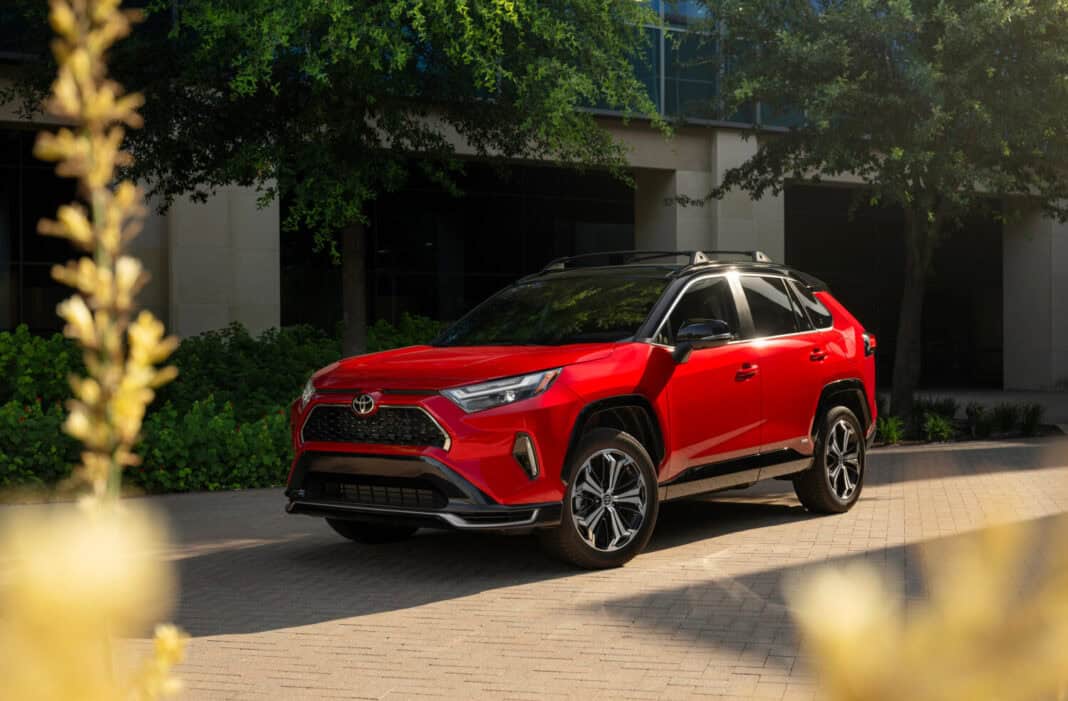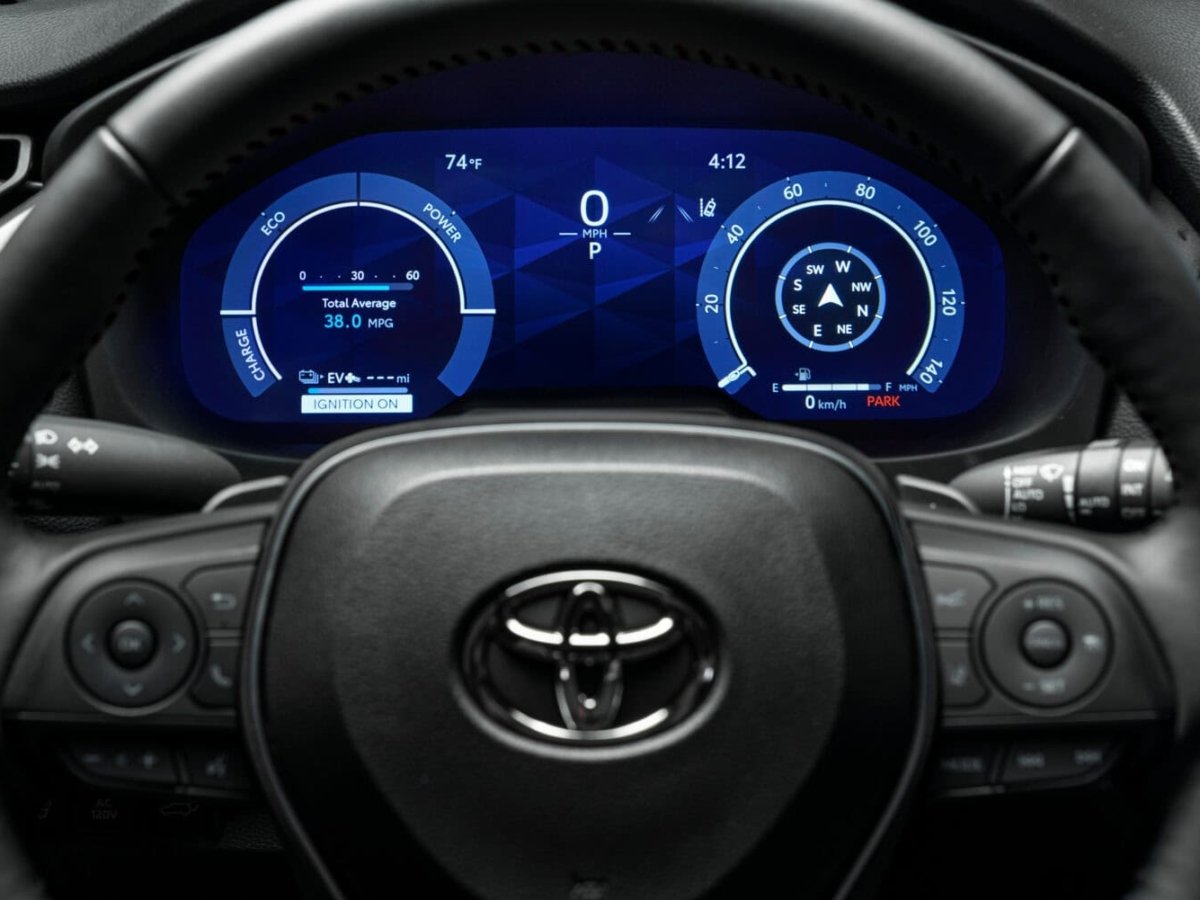The 2025 Toyota RAV4 Plug-In Hybrid (formerly known as the RAV4 Prime) continues to set a high standard in the compact SUV segment by combining robust performance, impressive efficiency, and advanced technology. Introduced in 2018 as a 2019 model year model, this fifth-generation RAV4 is almost at the end of its life cycle, but for one last time, we drove the plug-in hybrid compact SUV for a bit to see why it is so popular in North America.
Performance and Driving Impressions: Fast and frugal
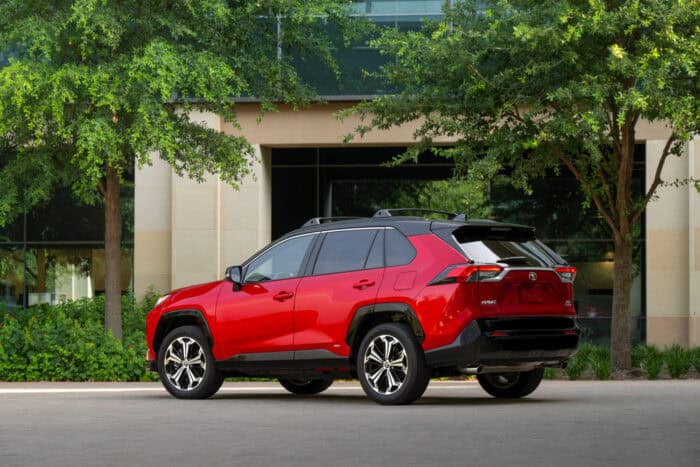
- Engine: 2.5L Dynamic Force 4-cylinder
- Engine Output: 177 hp @ 6,000 rpm / 165 lb-ft @ 3,600 rpm
- Hybrid System Output: 302 combined net horsepower
- Electric Motor (Front): 179 hp / 199 lb-ft
- Electric Motor (Rear): 53 hp / 89 lb-ft
- Battery: 18.1 kWh lithium-ion
- Drivetrain: Electronic On-Demand All-Wheel Drive (AWD)
- Transmission: Electronically controlled CVT (ECVT) with sequential shift mode
Under the hood, the RAV4 Plug-In Hybrid features a 2.5-liter four-cylinder normally aspirated engine paired with two electric motors, delivering a combined 302 horsepower. This setup enables the SUV to accelerate from 0 to 60 mph in just under 6 seconds, making it the quickest RAV4 variant and second only to the Toyota Supra in the brand’s lineup. The standard all-wheel-drive system ensures confident handling across various driving conditions. And yes, the RAV4 PHEV is fast and reassuring, but it doesn’t come close to what you get from a true performance SUV like the Porsche Macan, especially in handling. Or even compared to the Honda CR-V with its turbo.
“While it comes at a higher price point and has minor compromises in cargo space, its impressive acceleration and electric range make it a top contender for those seeking a versatile and eco-friendly vehicle.”
On the other hand, the RAV4 PHEV is a winner in the city when EV mode makes a lot of sense. With an estimated 68 km (42 miles) of pure electric driving, the most powerful RAV4 is also the better one when it’s time to see how it performs in terms of fuel consumption. In the US, the EPA gives it an estimated 94 MPGe range, and 38 MPG when the 4-cylinder is on its own. When this SUV is used around town (or near the house), it is possible to drive EV mode all the time and that is cool if you want to save even more gas. And if, by any chance, your weekend is focused on a trip to the mountain for some well-deserved ski time with the family, the PHEV drivetrain is compatible with any destination, whether there is a charging station or not.

Fuel economy specs:
- Electric-only driving range: Up to 42 miles
- MPGe: 94 (combined electric + gas efficiency)
- Gas-only fuel economy (when not using EV mode):
- City: 40 MPG
- Highway: 36 MPG
- Combined: 38 MPG
- Fuel tank capacity: 14.5 gallons
- Compatible with 87-octane regular gas
Related – Specs: Toyota’s Redesigned 2019 RAV4 Hybrid Improves Fuel Economy Figures
Interior: Well Assembled and Simple
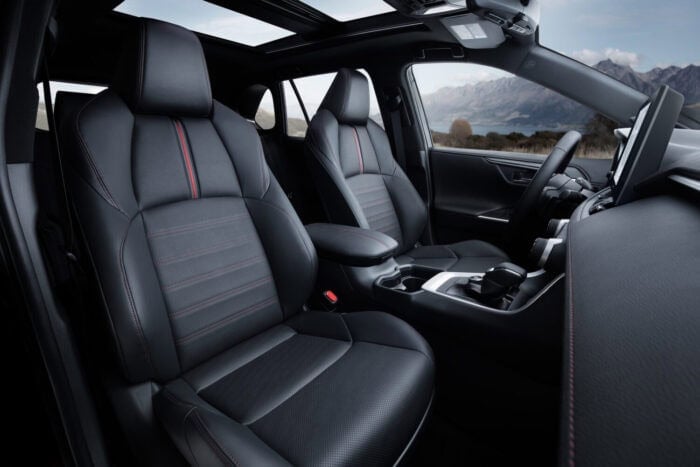
Introduced in 2019, the current RAV4 is still a strong contender in the compact SUV segment, even if its interior is a little bit old. It’s a Toyota, not a Lexus, so it’s normal to live with a few bits of plastic in the cabin, but in the RAV4 PHEV, the level is closer to Toyota’s luxury brand, since it is at the top of the RAV4 line-up.
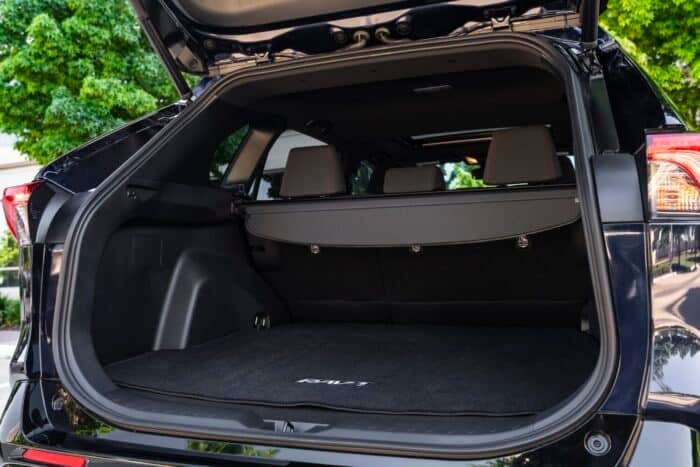
We enjoy those big buttons and the ease of playing with the driving modes. The simplicity of using this good old shifter for its transmission is welcomed, so is the simple steering wheel. We also appreciated the comfort from its leather seats, but we did notice a few wind noises inside. Like we said previously, it’s a Toyota, not a Lexus. Space behind is also in the mix, so is the cargo space behind the second row of seats. Yes, it’s true that Toyota’s own multimedia system is old, but it works relatively well, despite some older graphics.
Related – The 2025 SUVs Worth Waiting For: New and Redesigned Models Only
Styling: Not Much Since 2019

When Toyota revealed its latest iteration of the popular SUV back in 2018, the clash was quite high with the previous generation. While the old RAV4 was considered too quiet, the current RAV4 is a bit more aggressive on the outside, with some cues taken from the other SUVS from the brand. The boxiness of the 2025 RAV4 is well received but those two-toned black and silver wheels, despite being installed on the highest trimmed RAV4, look out of place on such an important SUV for the brand. Let’s see if Toyota’s design team will include some mode aerodynamic wheels on the next model.
Takeaway
Pros
- Great fuel efficiency
- Comfortable, fast and durable
- You can drive in EV mode most of the time
Cons
- The model still sells well, but it’s getting old
- The CVT is good, but an automatic would add a little dose of sportiness
The 2025 Toyota RAV4 Plug-In Hybrid stands out in the compact SUV market by offering a compelling mix of performance, efficiency, and modern technology. While it comes at a higher price point and has minor compromises in cargo space, its impressive acceleration and electric range make it a top contender for those seeking a versatile and eco-friendly vehicle. And yet, we can’t wait to see what Toyota has in store for the next generation of the popular model.

